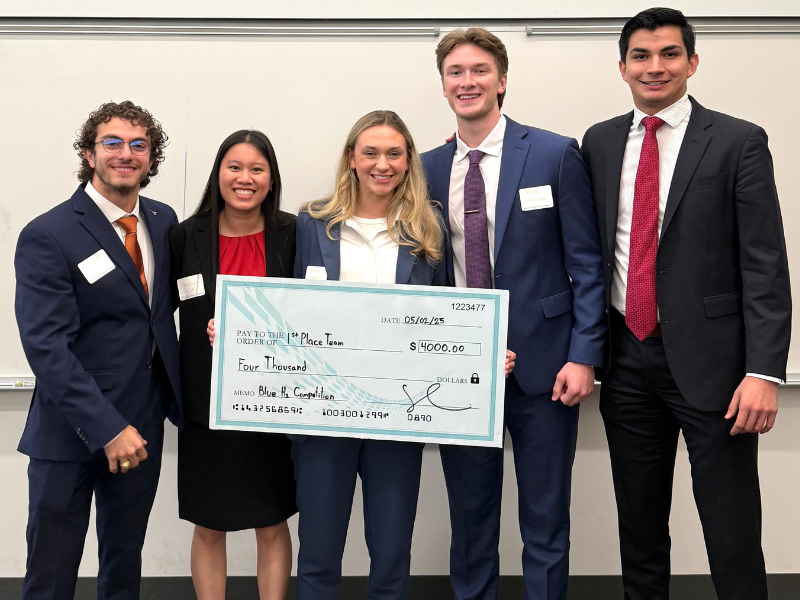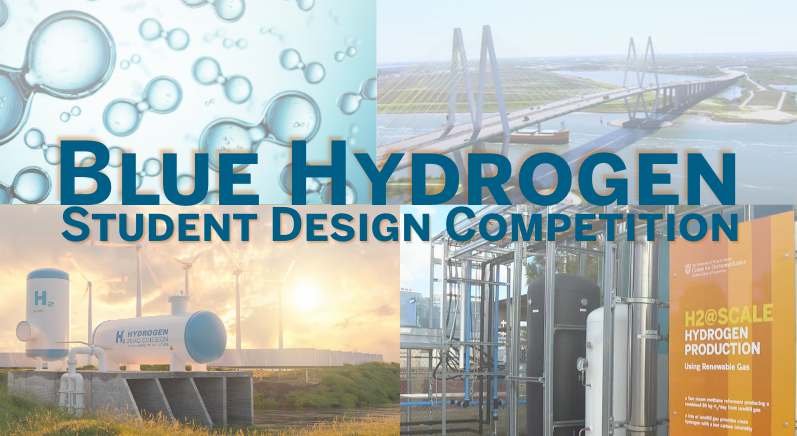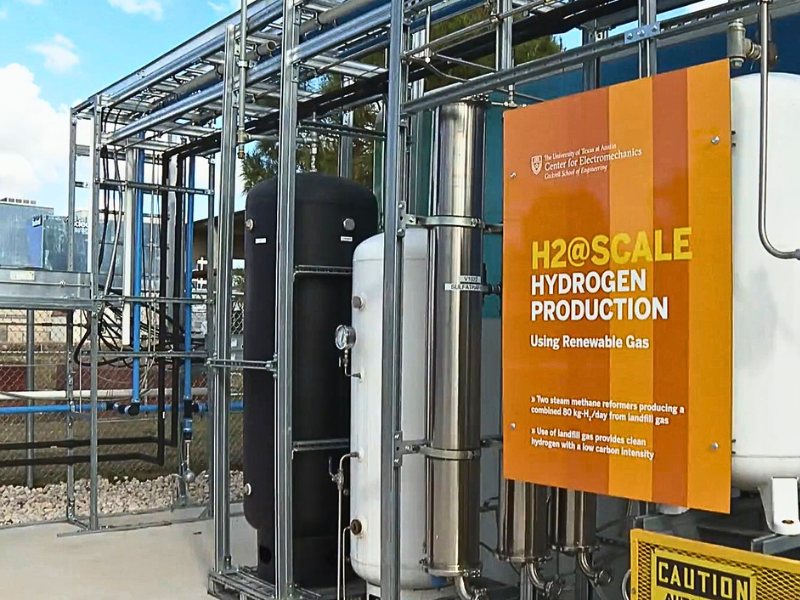
UPDATE:
Texas ChE Team wins Multi-University Student Design Competition: Blue Hydrogen
A team from The University of Texas at Austin has won the first multi-university Blue Hydrogen student design competition with their presentation on utilyzing blue hydrogen to improve the atmosphere. The top three teams from each participating universiry advanced to the presentation round, before a panel of hydrogen industry professional judges on May 2 at UT Austin.
More than 200 students working on 40 (plus) teams from three Texas universities were given the same information and basis for which to design a blue hydrogen process. Affectionately known as Project BIA–BIA is the Greek God of force, might and power and Hydrogen is a clean, versatile energy carrier–teams needed to address key project objectives: solve for 250 million standard cubic feet per day (mmSCFD) of hydrogen production, over 90% of the CO2 produced is captured for sequestration, and safety, operational and environmental risks needed to be addressed, among other components.
"The winning team successfully addressed the judges' questions, so much so that they ran out of questions because the team did such a great job addressing the problem in their formal presentation," offered Associate Professor of Practice, David T. Dalle Molle.
Congratulations to all the teams, including the top teams from The University of Austin at San Antonio and University of Houston for your hard work.
ORIGINAL STORY:
 Blue Hydrogen the focus of a Multi-University Student Design Competition
Blue Hydrogen the focus of a Multi-University Student Design Competition
Each year, fourth-year McKetta Department of Chemical Engineering students take on a capstone project in CHE 473K. Known simply as “Plant” to seniors, they are tasked with designing and evaluating a relevant chemical process. At the end of their project, students make a recommendation to their management, in this case their professor and teaching assistant, as to whether their process design achieved the technical and economic objectives of their proposed client. During this exercise, students apply everything they’ve learned from their first CHE course Introduction to Computing (210) to their penultimate core courses in Separations (363) and Reactor Design (372).
This year’s problem statement, written by Associate Professor of Practice, David T. Dalle Molle, focuses on blue hydrogen production and serves as the AIChE National Student Design Contest problem used by chemical engineering departments across the country. “Not only will students apply creative problem-solving strategies to come up with a feasible design,” Dalle Molle said, “they must also address health, safety, and environmental considerations all while assessing the economics of their process.”
Brian Korgel, director of UT’s Energy Institute, emphasized the value of this focus, “The spring 2025 problem statement provides the perfect opportunity to educate our future leaders to not only improve process efficiencies and drive profits for the companies they will work for, but to also create more sustainable energy technology solutions that benefit society."
Professor Korgel, who also serves on the Texas Hydrogen Production Policy Council and as the academic lead for the Gulf Coast HyVelocity Hydrogen Hub, found this student design problem particularly well-aligned with Texas’ growing role in the hydrogen economy. From a brief discussion a year ago between Dalle Molle and Korgel, the Blue Hydrogen Regional Student Design Competition/Symposium took life.

On May 2, The University of Texas at Austin will host student teams from chemical engineering departments across three Texas universities: UT Austin, The University of Texas at San Antonio and University of Houston. Two teams from each participating school will compete for the best Blue Hydrogen Process Design, presenting their semester-long work to a panel of six judges and hydrogen practitioners from companies active in the growing Hydrogen economy: Air Products, Chevron, Conoco-Phillips, Dow, ExxonMobil and Technip Energies. $7,000 in prizes will be awarded to the top-performing teams.
“It's exciting that our university is hosting this timely and relevant educational competition,” Korgel said. “This competition will educate more than 200 graduating students across these three universities in Texas and position them well to help drive our region as the global leader in hydrogen use and production.”






